10 Ways a Centralized Calendar Boosts Operational Efficiency

Overview
A centralized calendar significantly enhances operational efficiency by addressing common communication inefficiencies that plague organizations. By improving communication, reducing scheduling conflicts, and optimizing resource allocation, this solution directly tackles the challenges faced in today’s fast-paced environments. Features such as automated reminders, seamless integration with other tools, and customizable settings not only facilitate improved collaboration but also lead to increased productivity and superior management of tasks and timelines.
Consider the impact of these features:
- Automated reminders ensure that no important meeting is overlooked.
- Seamless integration with existing tools streamlines workflows.
- Customizable settings allow teams to tailor their experience, making collaboration more effective.
These enhancements create a dynamic environment where productivity flourishes, and deadlines are met with ease.
In conclusion, exploring the capabilities of a centralized calendar is essential for any organization looking to elevate its operational efficiency. By implementing such a solution, businesses can foster a culture of collaboration and productivity, ultimately driving success in their endeavors.
Introduction
A centralized calendar has emerged as a game-changer in enhancing operational efficiency, effectively addressing the communication breakdowns that often plague modern workplaces. By streamlining scheduling and fostering collaboration, organizations can unlock significant productivity gains, with studies indicating improvements of up to 25%. However, a pressing challenge remains: how can teams effectively implement and leverage these tools to minimize scheduling conflicts and maximize resources?
This article delves into ten transformative ways a centralized calendar can revolutionize business operations. It offers insights into its profound impact on communication, coordination, and overall efficiency, encouraging readers to explore the potential of this innovative solution.
AutoSuite: Enhance Communication and Scheduling Efficiency
In today’s fast-paced work environment, communication inefficiencies pose significant challenges for teams. AutoSuite addresses these issues by providing an intuitive interface that simplifies the planning process. This platform enables teams to communicate effortlessly, eliminating the hassle of back-and-forth emails. With features like instant meeting planning through Schedulelink, users can quickly arrange meetings, ensuring alignment and minimizing miscommunication.
The impact of these enhancements is profound. Notably, 81% of salaried employees express satisfaction with flexible work options, highlighting a growing trend in planning software. Furthermore, 68% of individuals report a lack of sufficient uninterrupted concentration during the workday, underscoring the urgent need for solutions like AutoSuite that enhance focus and reduce distractions. Organizations utilizing AutoSuite have reported increased employee satisfaction and improved operational performance, reinforcing the benefits of this powerful tool.
As businesses progressively embrace a centralized calendar, the ability to streamline communication becomes crucial. Efficient scheduling enhancements can lead to productivity gains of up to 25%. With AutoSuite, teams can concentrate on their essential tasks, fostering a more cooperative and effective work environment. Explore how AutoSuite can transform your team’s communication and operational efficiency.
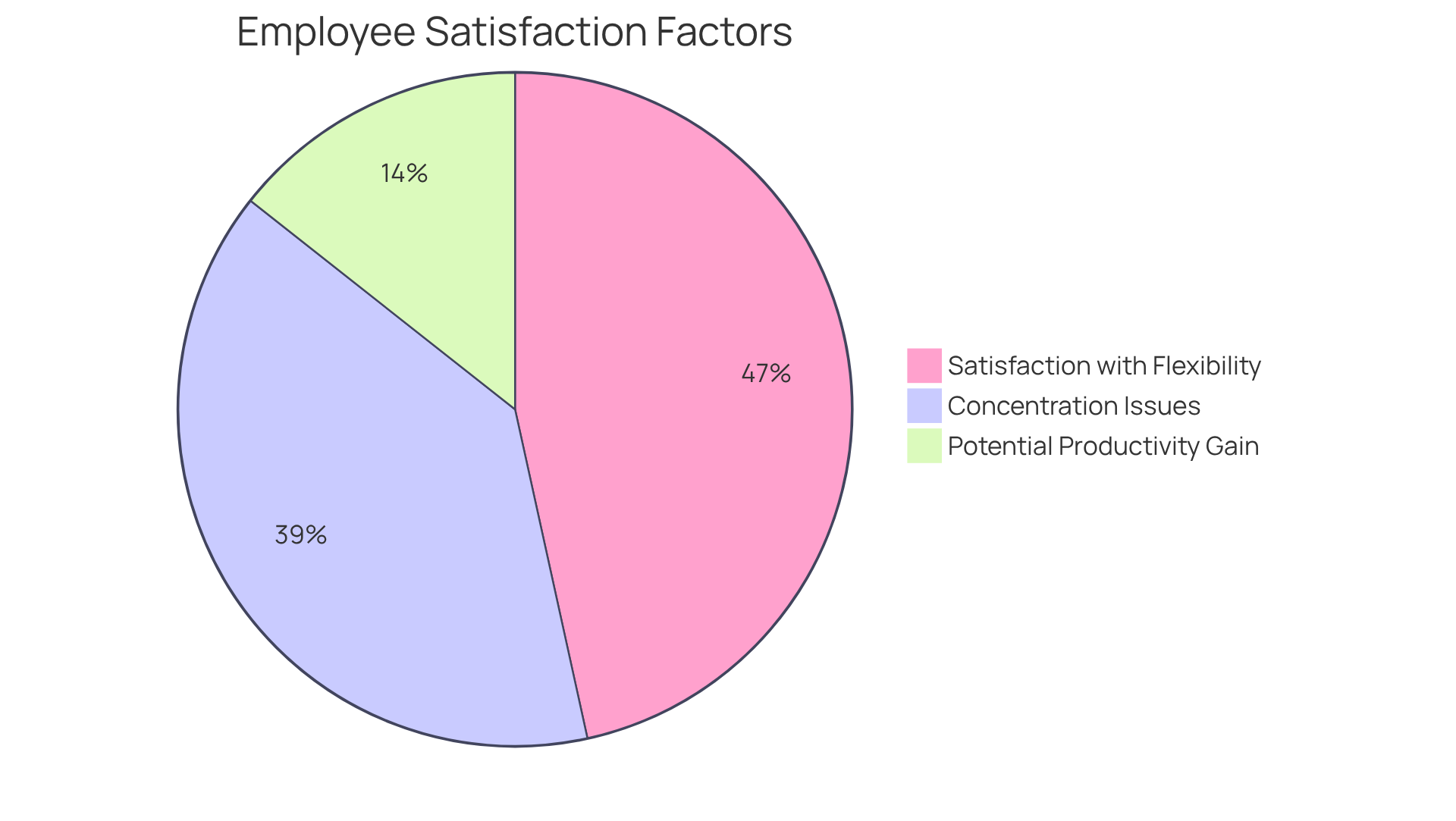
Improved Department Coordination: Foster Team Collaboration
A centralized calendar greatly improves coordination between departments by providing a shared platform for all team members to access and manage their schedules. This clarity aligns departmental objectives and enables efficient resource distribution, resulting in enhanced collaboration and success. Operations directors have observed that using shared planning platforms decreases miscommunication and enhances workflows, ultimately promoting a culture of teamwork. As one operations director expressed, “Implementing a centralized calendar has changed our communication and task management, enabling us to collaborate more effectively as a group.”
Moreover, entities that utilize cooperative task management tools featuring a centralized calendar report a 71% rise in success rates, underscoring the effectiveness of these tools in fostering collaborative efforts. Collaborative schedules enable teams to anticipate future resource needs, allowing proactive modifications to satisfy task demands. Additionally, they help identify overlapping commitments early, minimizing scheduling conflicts and promoting a more cohesive working environment.
As a result, departments can work in harmony, ensuring that all members are informed and engaged. This cohesion is crucial for achieving organizational objectives in 2025 and beyond, especially as 80% of companies plan to invest in collaboration tools to enhance operational efficiency.
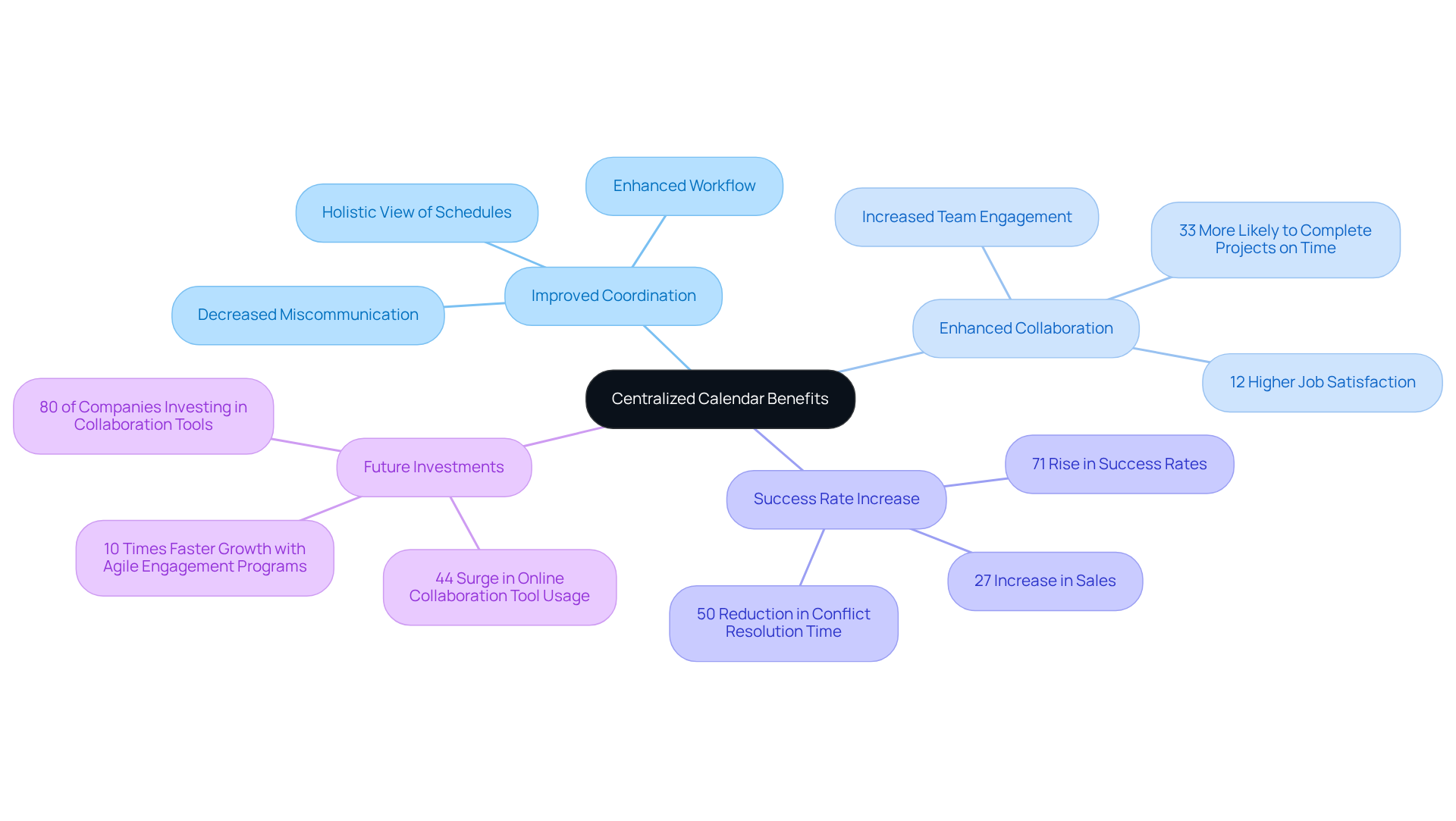
Simplified Project Management: Streamline Task Prioritization
A centralized calendar is a crucial tool for managers, allowing them to effectively prioritize tasks and deadlines. By merging all timelines into a unified perspective, teams can allocate resources more efficiently, ensuring that essential tasks are completed on time. This approach significantly reduces the risk of delays, evidenced by a 35% increase in execution achieved through optimized work management processes across various sectors. Project managers have observed that visual timelines not only clarify priorities but also foster enhanced team collaboration, resulting in improved overall performance.
Tools developed for task prioritization in 2025, such as automated scheduling software and visual management platforms, further bolster this trend, allowing managers to seamlessly visualize workloads and deadlines. As one manager noted, “Having a visual representation of our timelines has changed how we approach our initiatives, enabling us to concentrate on what truly matters and achieve results.” Moreover, a maintenance transformation initiative for a petrochemical leader elevated overall equipment effectiveness (OEE) to above 90%, illustrating how a centralized calendar can enhance operational efficiency and ensure project success.
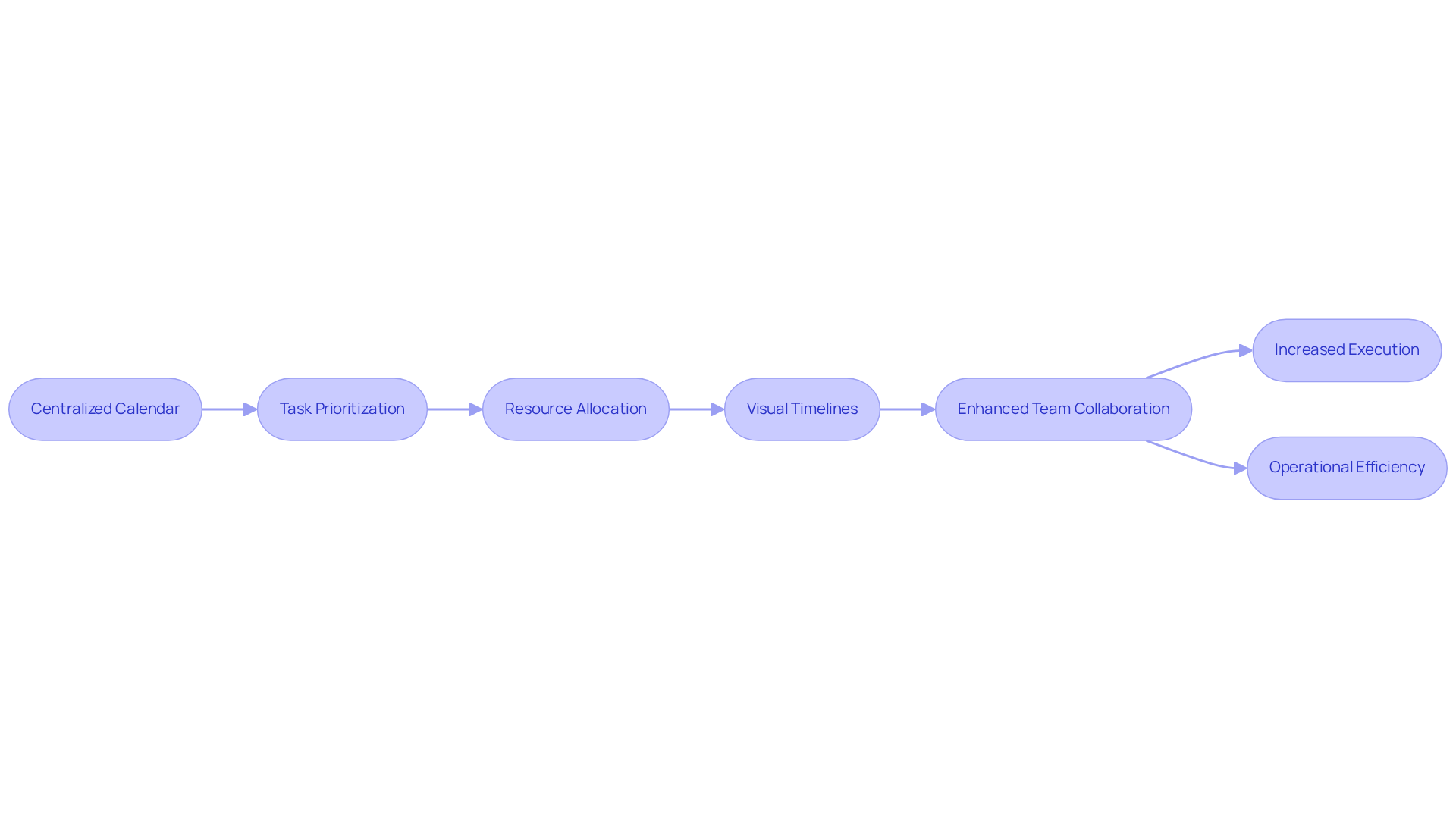
Increased Scheduling Visibility: Optimize Resource Allocation
A centralized calendar significantly enhances visibility for planning, enabling managers to swiftly recognize group availability and allocate resources with precision. This clarity is vital for optimizing resource allocation, ensuring that the right personnel are assigned to tasks at the right time, thus maximizing productivity. Entities that implement centralized resource management systems report a 64% emphasis on improving scheduling accuracy; however, only 16% plan to invest in advanced software, revealing a gap that can be bridged by adopting efficient scheduling solutions.
Furthermore, case studies, such as ‘Reviewing Employee Workloads,’ demonstrate that utilizing resource schedules can prevent overcommitment and reduce team fatigue, leading to a more balanced workload and improved outcomes. As operations expert Lulu Richter asserts, “Centralized visibility into assignments and timelines is essential for reducing the risk of double-booking and making informed prioritization decisions across projects.” Notably, 41% of participants encountered challenges in accessing available resources in 2022, underscoring the need for a centralized calendar to address this issue.
By leveraging a centralized calendar, businesses can streamline their planning processes while enhancing overall operational efficiency. To take decisive action, consider exploring a resource planning tool like Runn to optimize your time and resource distribution.
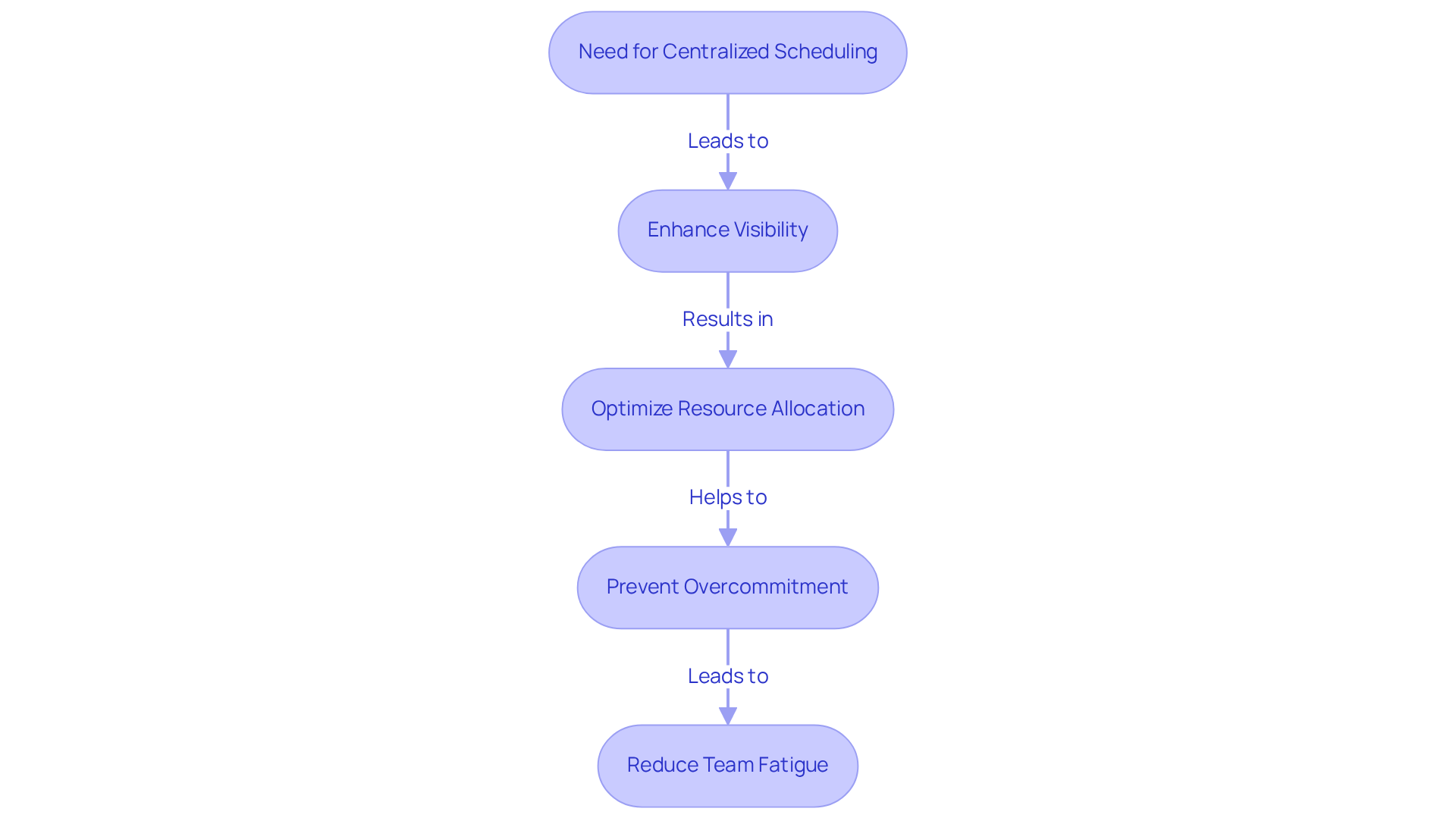
Reduced Scheduling Conflicts: Minimize Overlaps and Errors
Organizations face significant operational challenges due to planning conflicts that can disrupt schedules and hinder productivity. By employing a centralized calendar, these challenges can be effectively addressed. The system not only detects overlaps automatically but also alerts users, significantly minimizing the chances of double-booking. This ensures that the centralized calendar schedules meetings and tasks without errors, enhancing overall efficiency. Explore how this solution can transform your organizational communication and operational effectiveness.
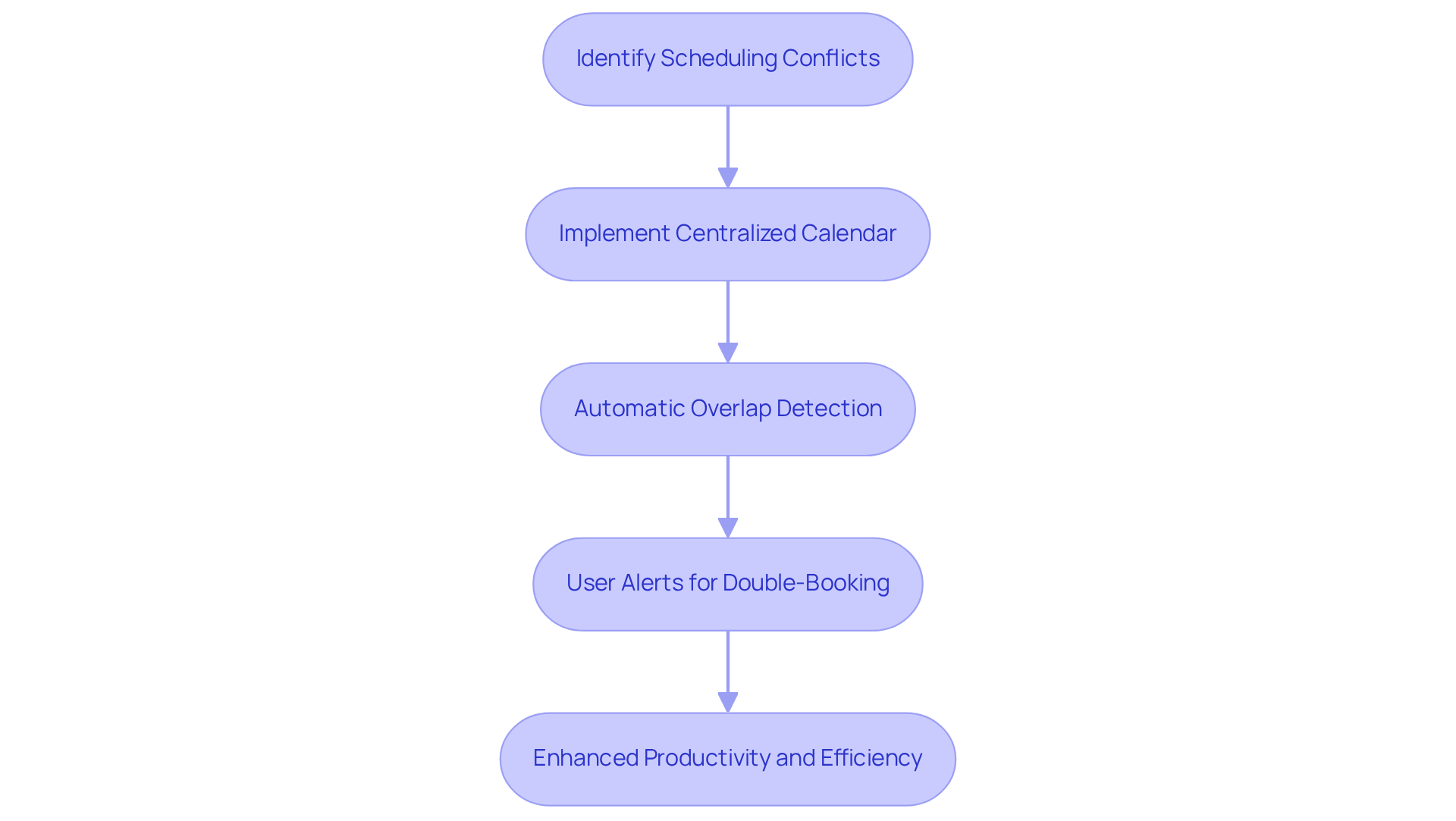
Time Savings: Automate Scheduling Tasks
By utilizing a centralized calendar for automating task organization, the prevalent issue of communication inefficiencies is addressed, resulting in substantial time savings for groups. By leveraging features such as automatic reminders and coordination links, organizations can drastically minimize the manual effort required for meeting arrangements. Research shows that dedicating just 10-12 minutes to daily planning can yield a minimum of two hours saved from wasted time, highlighting the efficiency gains achievable through automation.
Operations directors have noted that automatic reminders not only streamline the planning process but also enhance accountability among team members, allowing them to focus on their core responsibilities. With automation, companies can anticipate reclaiming over 240 hours annually per employee, which translates to heightened productivity and operational efficiency. By significantly reducing the time spent on manual scheduling, teams can redirect their efforts towards strategic initiatives that foster growth and innovation.
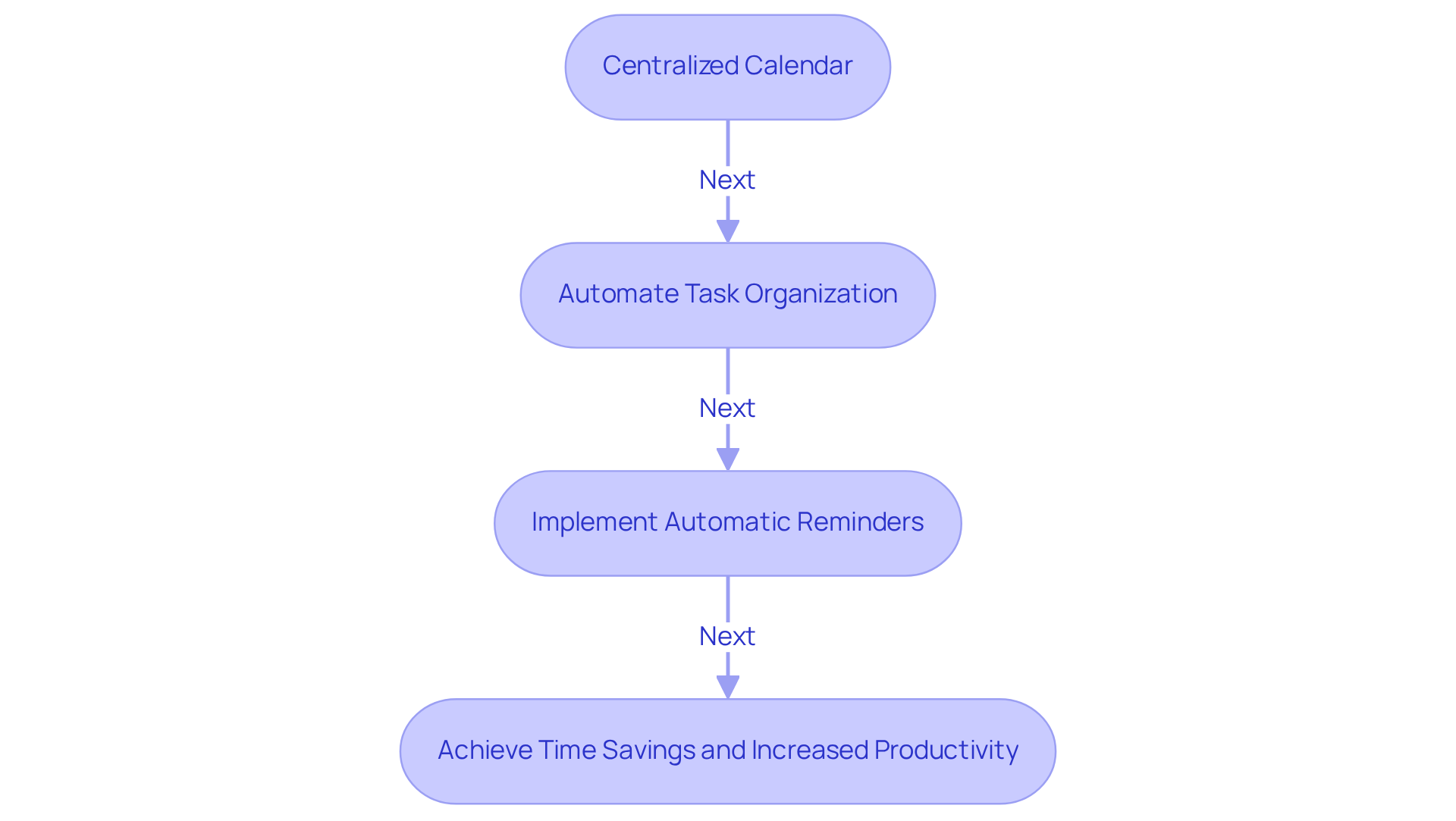
Enhanced Accountability: Utilize Reminders and Notifications
A centralized calendar plays a crucial role in addressing communication inefficiencies by incorporating reminders and notifications that significantly enhance responsibility among group members. Timely alerts regarding upcoming meetings and deadlines keep individuals focused and committed to their tasks. Research indicates that automated reminders can reduce no-show rates by 29%, while automated SMS text reminders achieve impressive response rates of 97% to 99%. These statistics demonstrate the effectiveness of reminders in maintaining engagement and attendance.
Furthermore, 87% of professionals express interest in chronoworking, which aligns work hours with personal productivity peaks, thereby enhancing performance through timely notifications. Team leaders have observed that clear and consistent alerts not only bolster individual accountability but also foster a culture of responsibility within teams. However, it is essential to strike a balance in the use of reminders, as excessive notifications can lead to alert fatigue.
Consequently, organizations can anticipate enhanced overall performance. Efficient use of reminders contributes to a more structured and productive work environment, highlighting the importance of integrating a centralized calendar into daily operations.
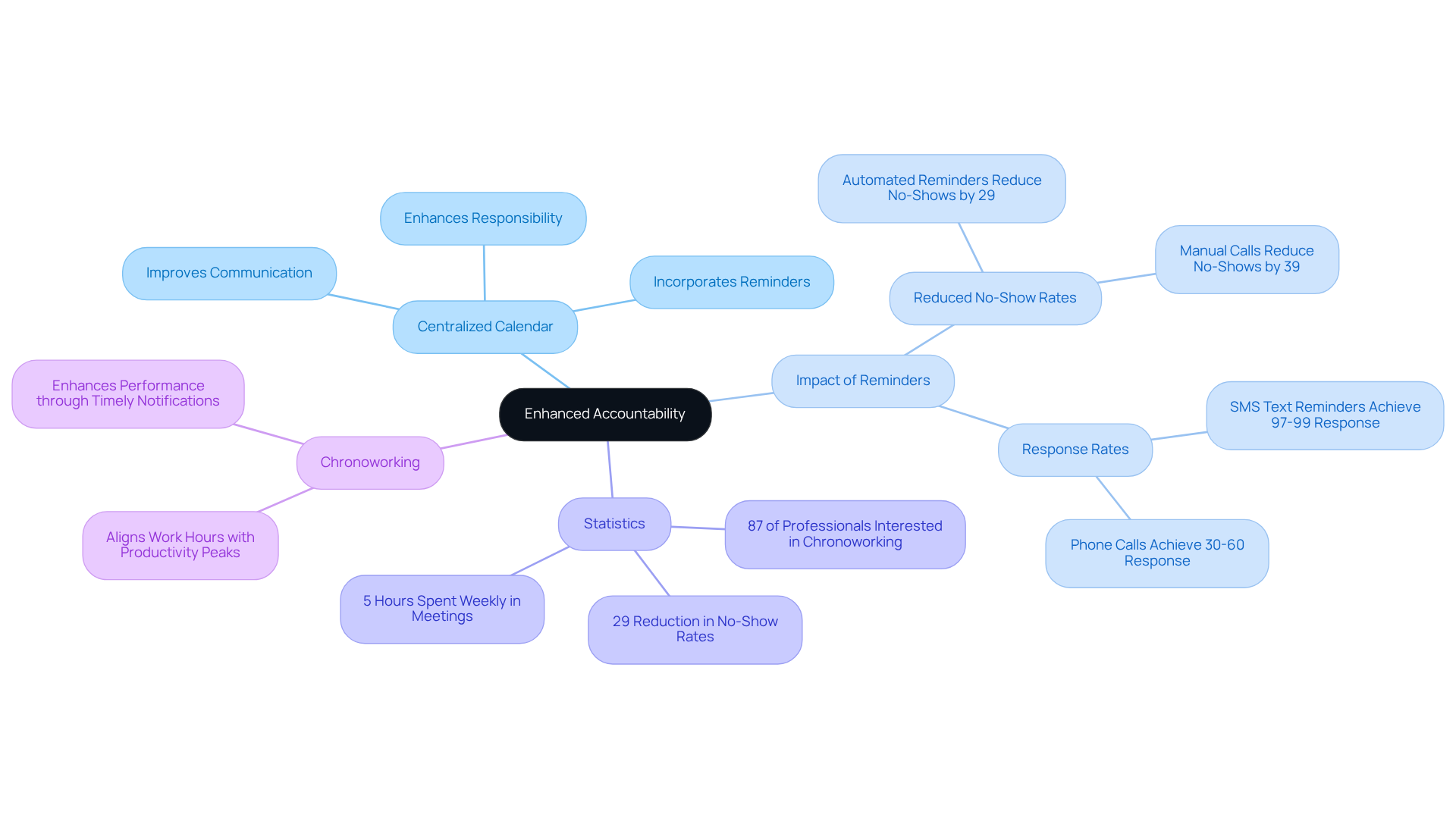
Seamless Integration: Connect with Other Operational Tools
A centralized calendar addresses the pressing issue of communication inefficiencies that many organizations face today. By effectively integrating with various operational tools, including project management software and communication platforms, this system fosters a cohesive workflow. Groups can access essential information in one centralized location, significantly reducing the time spent switching between applications and enhancing overall productivity. Research indicates that efficient schedule integrations can lead to a remarkable 40% boost in user productivity, as teams manage agendas and tasks seamlessly, avoiding the complications of disconnected systems.
Linking planners with task management tools simplifies time management and ensures that all team members are aligned on timelines and responsibilities. This seamless integration is not just beneficial but crucial in 2025, as businesses increasingly depend on digital solutions to optimize their operations. Real-world examples demonstrate that organizations employing integrated planning systems experience fewer timing conflicts and improved communication, which ultimately enhances project outcomes and operational efficiency.
Moreover, features such as automated reminders and intelligent planning play a pivotal role in streamlining workflow efficiency. Strong security measures, including end-to-end encryption, safeguard sensitive planning data, ensuring that information remains secure. By exploring the potential of a centralized calendar, organizations can transform their operational capabilities and achieve significant improvements in productivity and collaboration.
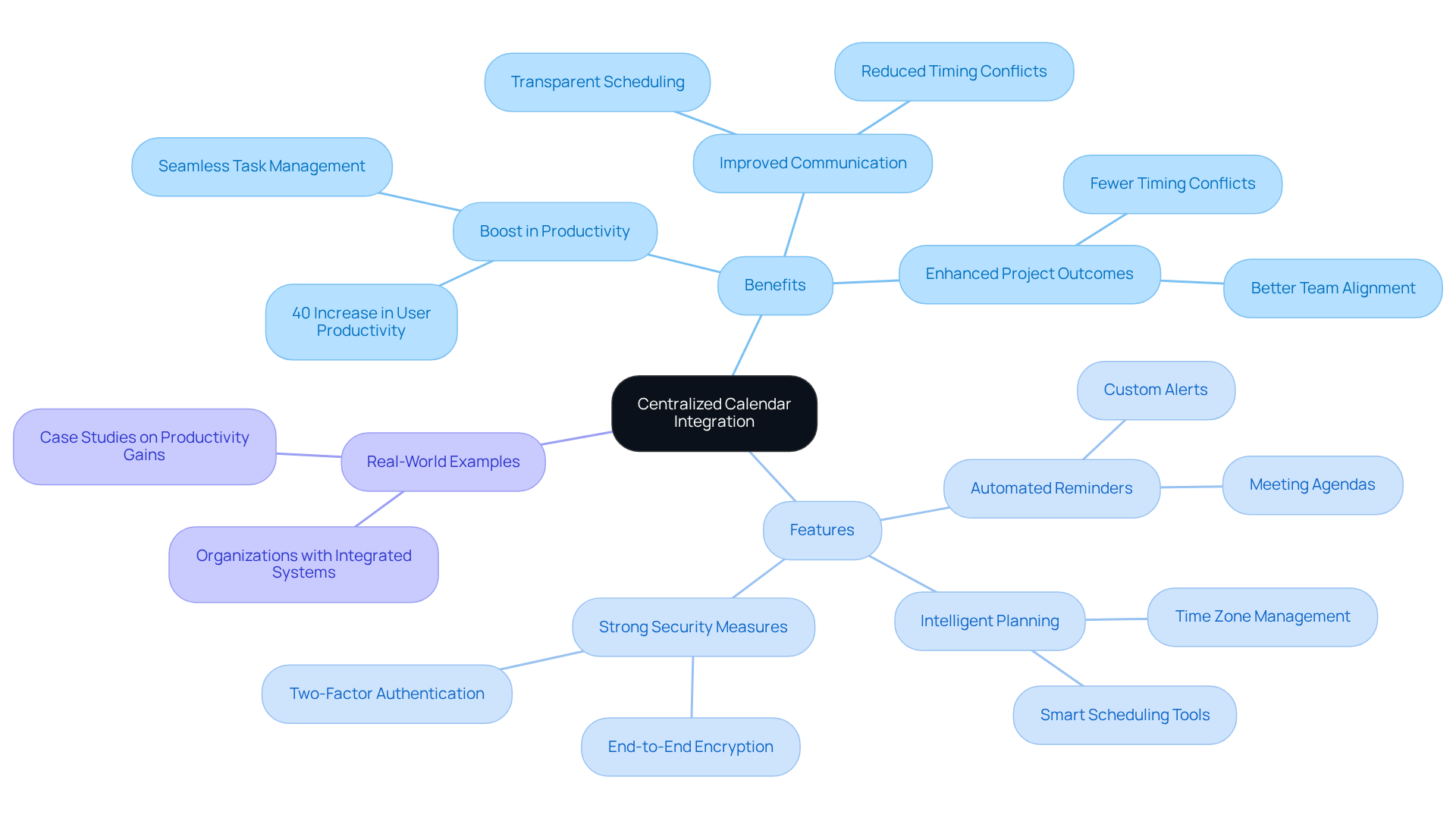
Customizable Features: Tailor Your Calendar Experience
Centralized planners tackle the pressing issue of communication inefficiencies by providing a centralized calendar with a variety of customizable features that empower users to tailor their scheduling experience. These tools allow for adjustments in notification preferences, layout configurations, and other settings, catering to individual needs. As a result, usability and satisfaction are significantly enhanced. For instance, a survey indicated that 70% of adults utilize digital planners, with younger users showing a marked preference for mobile options. This trend highlights the critical importance of personalization; tailored experiences not only foster improved user engagement but also enhance overall efficiency.
Users have consistently reported higher satisfaction levels when they can modify their scheduling settings to align with their unique workflows. This demonstrates that customization transcends being merely a feature; it is a necessity in today’s fast-paced environment. As we approach 2025, the demand for customized scheduling solutions is poised to expand further, reflecting a broader shift towards user-focused design in digital tools. Embracing these customizable options is essential for staying ahead in a rapidly evolving landscape.
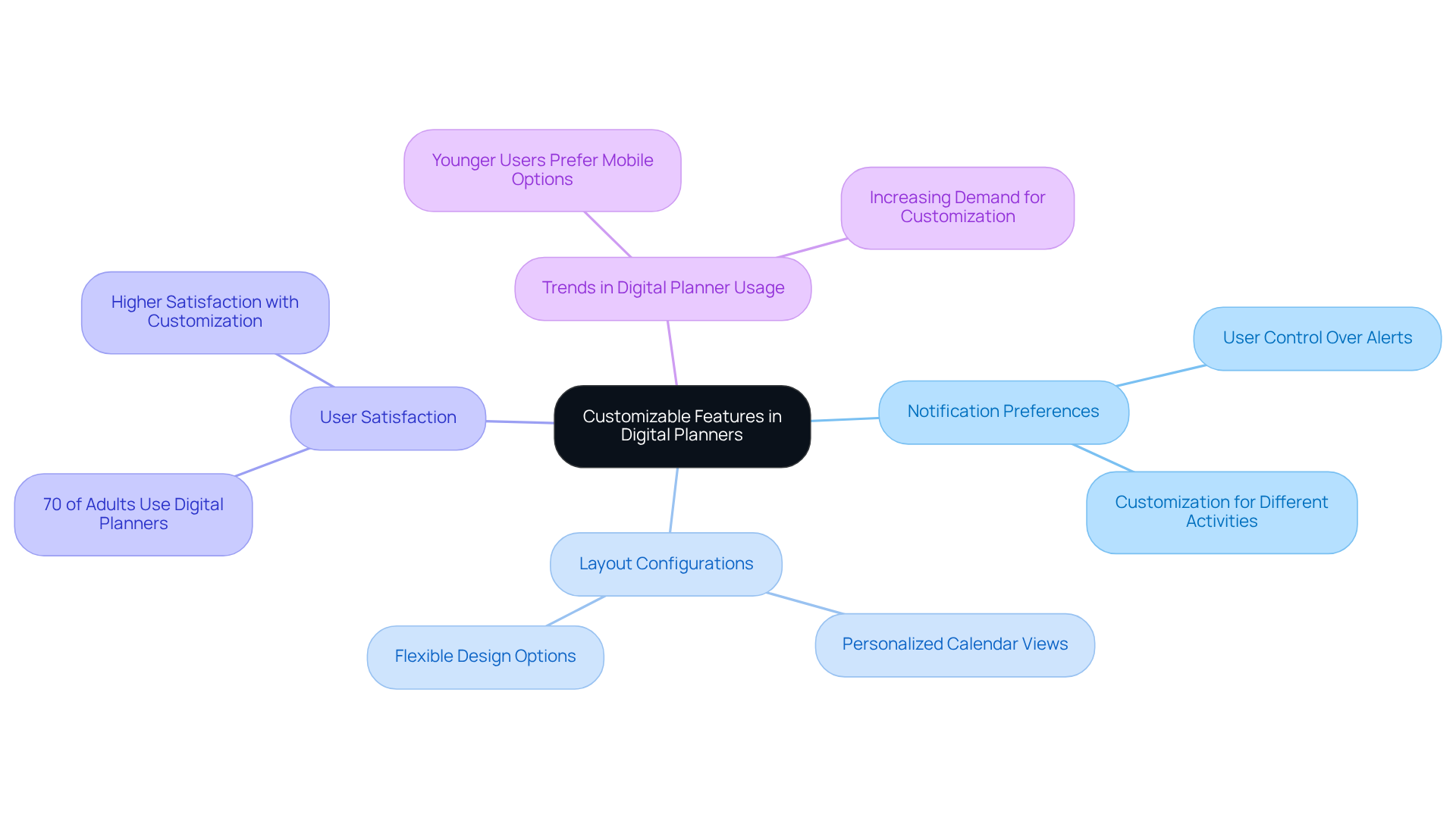
Operational Efficiency: Achieve Streamlined Processes
Implementing a centralized calendar can greatly improve operational efficiency within organizations. By streamlining processes, these tools reduce redundancies and improve communication, which is crucial for effective project management. For instance, chatbots can cut administrative workloads in half, allowing teams to focus on strategic initiatives rather than logistical challenges. In 2025, it is projected that 75% of businesses will adopt AI-powered calendar tools, reflecting a growing recognition of their value in optimizing workflows.
The impact of streamlined processes on organizational performance is profound. Companies employing AI management tools have reported productivity increases of up to 66%, equivalent to 47 years of organic productivity gains. This is especially important as 60% of professionals face challenges with coordinating across multiple time zones, resulting in missed opportunities and inefficiencies. By leveraging a centralized calendar, organizations can navigate these challenges effectively, ensuring that meetings are scheduled with optimal timing and relevance.
Real-world examples further illustrate the effectiveness of these solutions. A top CRM software firm incorporated AI planning assistants, leading to a 22% increase in productivity for sales representatives. Furthermore, organizations that have implemented anticipatory planning systems can proactively reserve time slots for critical tasks, enhancing overall efficiency. Notably, $100 billion is lost annually due to unproductive meetings, underscoring the importance of effective scheduling tools.
As operations directors increasingly recognize the importance of streamlined processes, the adoption of centralized calendar solutions will be crucial in achieving strategic goals and maintaining a competitive edge in the evolving business landscape.
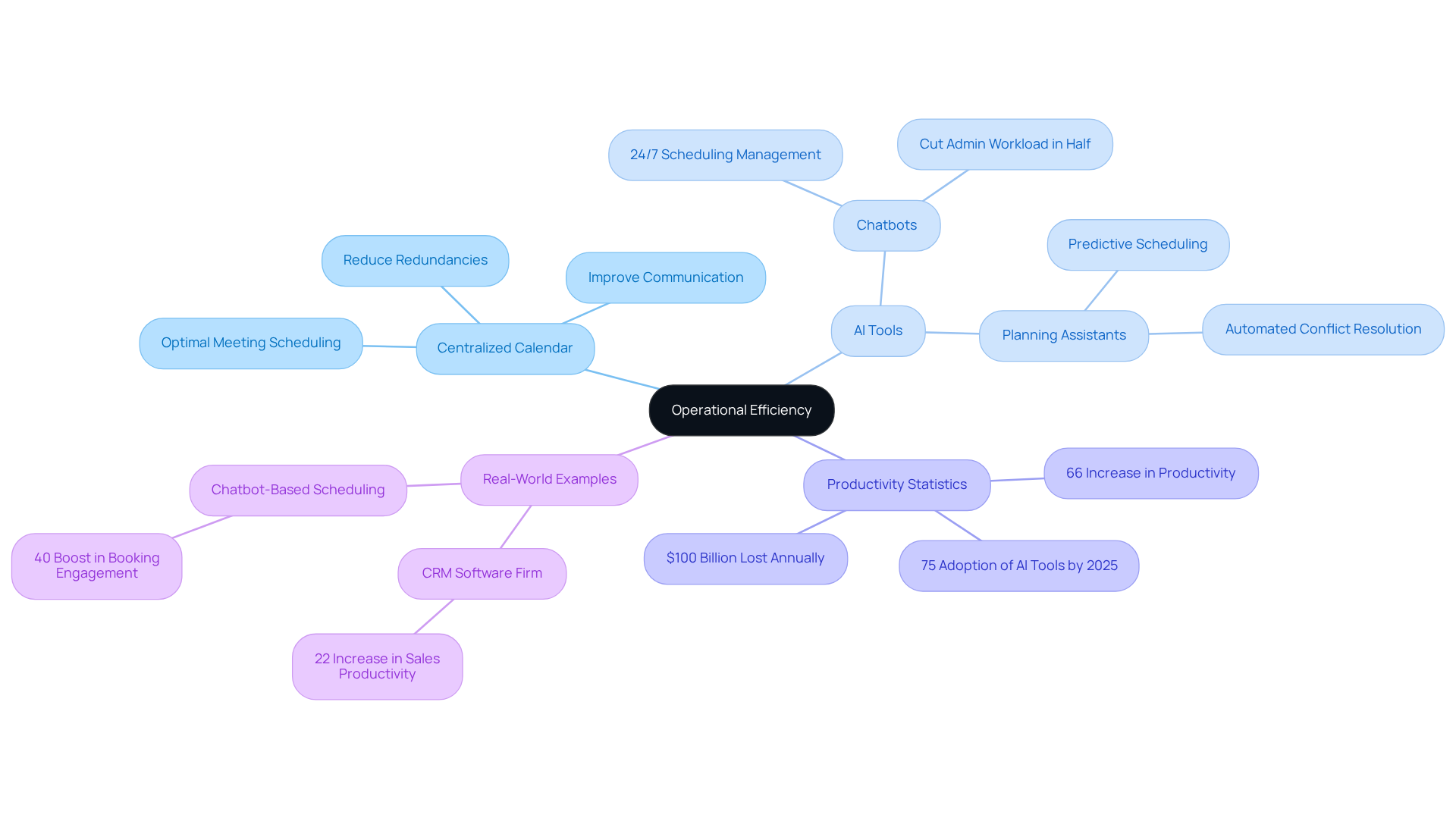
Conclusion
Implementing a centralized calendar is a transformative strategy that significantly enhances operational efficiency across organizations. By consolidating scheduling and communication into a single platform, teams can markedly improve coordination, streamline project management, and foster collaboration. This approach minimizes miscommunication and empowers organizations to focus on strategic objectives, ultimately driving productivity and satisfaction.
Throughout this article, the numerous advantages of adopting a centralized calendar have been underscored. From increased scheduling visibility and reduced conflicts to enhanced accountability and seamless integration with other operational tools, each benefit contributes to a more efficient work environment. Moreover, the customizable features of centralized calendars allow organizations to tailor their scheduling experiences, catering to the unique needs of their teams and fostering user engagement.
In a landscape where operational efficiency is paramount, embracing a centralized calendar is not merely a trend—it is a necessity. Organizations are urged to leverage these tools to optimize their workflows and enhance collaboration among departments. By investing in centralized scheduling solutions, businesses can improve their internal processes and position themselves for sustained growth and success in an increasingly competitive marketplace.
Frequently Asked Questions
What is AutoSuite and how does it enhance communication?
AutoSuite is a platform designed to improve communication and scheduling efficiency in teams. It offers an intuitive interface that simplifies planning processes, allowing teams to communicate effortlessly and arrange meetings quickly through features like Schedulelink, which reduces the need for back-and-forth emails.
What are the benefits of using AutoSuite for scheduling?
Organizations using AutoSuite report increased employee satisfaction and improved operational performance. Efficient scheduling can lead to productivity gains of up to 25%, allowing teams to focus on essential tasks and fostering a more cooperative work environment.
How does a centralized calendar improve department coordination?
A centralized calendar provides a shared platform for team members to access and manage schedules, enhancing coordination between departments. It reduces miscommunication, aligns departmental objectives, and promotes teamwork, leading to a reported 71% rise in success rates for entities utilizing such tools.
What impact does a centralized calendar have on project management?
A centralized calendar helps managers prioritize tasks and deadlines effectively by merging all timelines into a unified view. This approach improves resource allocation, reduces delays by 35%, and enhances team collaboration, ultimately leading to better project outcomes.
What tools are being developed for task prioritization in 2025?
Tools such as automated scheduling software and visual management platforms are being developed to aid task prioritization. These tools allow managers to visualize workloads and deadlines, facilitating better focus on essential tasks and improved overall performance.
Why is fostering team collaboration important for organizations?
Fostering team collaboration is crucial for achieving organizational objectives, especially as companies plan to invest in collaboration tools to enhance operational efficiency. A cohesive working environment minimizes scheduling conflicts and ensures all team members are informed and engaged.
